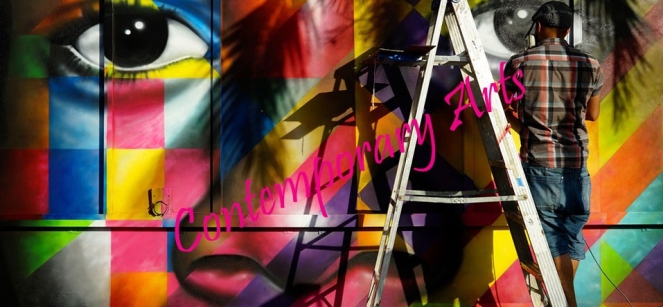#art #contemporary #society #culture #education #aesthetic #perception
“Art is the blueprint of Society”–Paul Ebeling
Contemporary art is important due to its being a product and witness of a specific time and era. It enables us to state, gain insight and question certain socio-cultural or ideological/political developments, raising awareness, calling the world to a halt and encouraging debate.
Art keeps its finger at the pulse of the world, thus indicating its importance for mankind.
So, it is very important to implement art in an educational context by bringing art to the class rooms at schools by teaching and by going to museums. It is Key for our children to get acquainted with art so they study and gain an affinity with contemporary art.
Art is culture, an amalgam of cultures. Art questions culture and the direction it is heading. For instance, during the post-war era, people were left a bit alienated seeing the negative effects of capitalism and consumer culture. As a result, artists reacted to this tendency with for instance the art movement of Capitalist Realism. Such reactions are often socially motivated.
Art and contemporary art strive for a better world. As a result, contemporary art has a very strong connection with social activism.
From a political/ideological outlook, there is great value in contemporary art. As with the socio-cultural value of art, contemporary art is able to question a certain ideology or political climate.
Art is used as a tool for research, using its audience and form as an instrument to create awareness. As a result, a debate follows as a state or society rethinks its political state or ideological beliefs. I have been in this frame for most of my life, beginning in grade school.
The educational value of art.
Contemporary art is a tool for self-development. As with other forms of cultural expression, such as film, literature and the performing arts it enables us to evolve personally, expanding our view of the world or discovering or creating our own viewing point or vision of certain things.
Art has esthetic value in which we find pleasure, amusement or joy. This value can take shape in the form of decoration or in the form of leisure or relaxation. We view art because we find it appealing and are interested in its qualities, ranging from its esthetic qualities up to its radical originality.
Spirituality and Art
In this context we should stress the importance of the spiritual value of art especially in a contemporary context. Due to the secularization and demystification of spirituality because of science in major parts of the world, art has become the ultimate form and expression of spirituality.
Spirituality has been around as long as mankind. People long for a transcendent or meditative experience, a spiritual moment of contemplation or introspection. But, in a godless and demystified world view the path is crooked.
Art has always carried a certain spiritual dimension. As, we act in a similar manner in a museum as we do in church. We are silent and serene while beholding the ‘sacred’ objects which are the artworks on display, they ‘nourish our souls’.
To the end of education, contemplation, introspection, joy and enlightenment K-Art is forming an Art Society to continue the discussions.
Stay tuned…
My 1st art work other than drawing, was a sculpture entitled ‘Aesthetic Perception‘, I was 13 anni.
Aesthetic Perception is a really interesting topic for philosophers and scientists who investigate how it influences our interactions with objects and states of affairs. Over the last few yrs, several studies have attempted to determine “how aesthetics is represented in an object,” and how a specific feature of an object could evoke the respective feelings during perception.
I believe that aesthetic perception is a normal process that enables people to enhance their interactions with physical and socio-cultural environments.
Considering perception as an anticipatory and preparatory process of detection and evaluation of indications of potential interactions. And the minimal content of aesthetic perception is an emotionally valued indication of interaction potentiality.
Aesthetic perception allows 1 to normatively anticipate interaction potentialities, thus increasing sense making and reducing the uncertainty of interaction.
This conception of aesthetic perception is compatible with contemporary evidence from neuroscience, experimental aesthetics, interaction art and design. It overcomes several problems of transcendental, art-centered, and objective aesthetics as it offers an alternative to the idea of aesthetic objects that carry inherent values by explaining “the aesthetic” as emergent in perception within a context of uncertain interaction.
Have a healthy, prosperous day, Keep the Faith!









